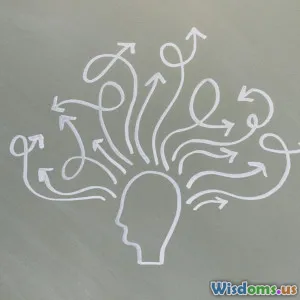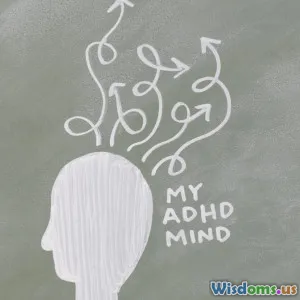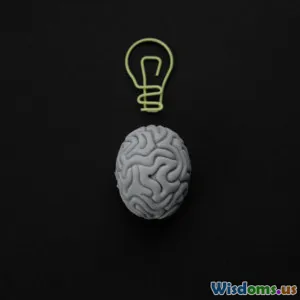
Unlocking the Secrets of Dreams
8 min read Explore the neuroscience behind dreams and uncover why our brains create these mysterious nightly experiences. (0 Reviews)
Unlocking the Secrets of Dreams: A Journey Into Brain Science
Dreams have mesmerized humanity for millennia—from ancient mystics interpreting their visions to modern psychologists analyzing their symbols. Yet even today, the mysterious world of dreams feels elusive, a delicate web woven in the subconscious. What exactly are dreams? How does the brain create these nightly experiences, so vivid yet intangible? This article dives deep into brain science to uncover the secrets behind dreams, breaking down current knowledge and dispelling misconceptions.
What Are Dreams? More Than Random Flickers
Most people think of dreams as a series of random images or stories that play out as we sleep. While the precise definitions vary, brain scientists define dreams as experiences of sensory, emotional, and cognitive phenomena that occur primarily during the rapid eye movement (REM) stage of sleep. During REM, parts of the brain involved in vision, emotion, and memory activism are highly engaged, creating what feels like an immersive narrative.
Not all dreams happen during REM, however. Studies have shown that brief, often less vivid dreams can occur during non-REM sleep phases, although these tend to be more thought-like and less hallucinatory.
The Brain at Work: Neural Correlates of Dreaming
Brain imaging technologies like fMRI and EEG have advanced our understanding of dreaming considerably. Scientists have identified key areas activated during REM-related dreaming:
- Visual Cortex: Responsible for the vivid, often surreal landscapes seen in dreams.
- Amygdala: Adds emotional intensity, often explaining how dreams elicit strong feelings such as fear or joy.
- Prefrontal Cortex: Interestingly, it is less active during dreams, which aligns with reduced logical reasoning, self-awareness, and insight, leading to bizarre and illogical dream plots.
These insights show dreams aren’t random flickers but organized brain activity involving perception, emotion, and memory.
Theories Behind Why We Dream
Dreams serve many hypothesized purposes, and even today, no single explanation fully accounts for their complexity. Here are some prominent theories backed by scientific research:
1. Memory Consolidation
One of the most persuasive theories posits that dreams help wire memories and experiences from the day into the brain’s long-term storage. During REM sleep, the brain reorganizes and strengthens neural connections linked to important memories. A 2013 study published in Nature Neuroscience demonstrated that rats replayed specific maze-running activities during REM, supporting this memory consolidation function.
2. Emotional Regulation
Emotions that arise from daily stressors may find expression in dreams, allowing the brain to process and regulate feelings in a safe environment. This idea connects to therapeutic practices like nightmare therapy for PTSD patients, where altering dream content can alleviate anxiety.
3. Problem-Solving and Creativity
Famous examples—such as chemist August Kekulé visualizing the structure of benzene through a dream—highlight dreams' potential role in creativity. Research also suggests the relaxed prefrontal cortex during dreaming allows free association, potentially fostering novel ideas.
4. Threat Simulation
Evolutionary psychologists propose dreams helped early humans simulate threats for practice. Dreams featuring dangers like being chased might have prepared people to react more efficiently in real life.
Fascinating Dream Phenomena Explored by Science
Lucid Dreaming: When Awareness Takes Over
Lucid dreaming occurs when a sleeper becomes conscious of dreaming and can sometimes control dream content. Neuroscientific research suggests increased activation in the prefrontal cortex during lucid dreams, linking awareness to this usually quiescent brain region. Lucid dreaming therapies show promise for treating nightmares and improving problem-solving skills.
Nightmares: When Dreams Turn Dark
Nightmares are distressing dreams that often awaken the dreamer with intense fear or anxiety. Their frequency and content can correlate with stress, trauma, or sleep disorders like PTSD. Brain imaging shows heightened amygdala activity during nightmares, emphasizing their emotional intensity.
Recurring Dreams and Common Themes
Many people report repeated dream plots—falling, being chased, or naked in public—suggesting common psychological themes tied to anxiety, vulnerability, and social concerns. Studying these themes helps psychologists understand universal emotional challenges.
Unlocking Dreams With Technology: The Future of Dream Research
Brain science continues to push frontiers in dream research. Recent advances include:
- Neural Decoding: Researchers have begun decoding dream imagery by analyzing brain activity. A 2017 study successfully reconstructed approximate dream images using AI trained on fMRI data, marking a step toward 'reading' dreams.
- Virtual Reality and Dream Simulation: Techniques combining VR and sleep studies aim to influence dreams, potentially enhancing learning or emotional healing.
- Pharmacological Studies: Substances like melatonin and certain drugs affect REM and dream vividness, aiding research on dream manipulation and treatment of sleep-related disorders.
Though still in infancy, these approaches hold promise for completely transforming our understanding of what dreams reveal about the human mind.
Conclusion: Why Studying Dreams Matters
Unlocking the secrets of dreams isn’t just an academic pursuit; it touches the core of human experience. Dreams bridge our waking and sleeping worlds, revealing how the brain integrates memory, emotion, creativity, and survival instincts. By understanding the neural mechanics and purposes of dreaming, we better grasp mental health, treatment for sleep disorders, and even the roots of consciousness itself.
As neuroscience shines light on these nocturnal mysteries, perhaps the phrase will one day shift from “chasing dreams” to truly knowing them. You might even start paying more attention to your own dreams tonight—since they are much more than fleeting stories, they're echoes of your brain’s intricate, unseen cultures.
References:
- Nielsen, T.A. (2017). The nature and function of dreaming. Sleep Medicine Reviews.
- Siclari, F., et al. (2017). The neural correlates of dreaming. Nature Neuroscience.
- Wamsley, E.J. (2014). Dreaming and offline memory consolidation. Current Neurology and Neuroscience Reports.
- Voss, U., et al. (2014). Induction of lucid dreaming: wake-up-back-to-bed and cognitive techniques. Sleep.
Rate the Post
User Reviews
Popular Posts





















